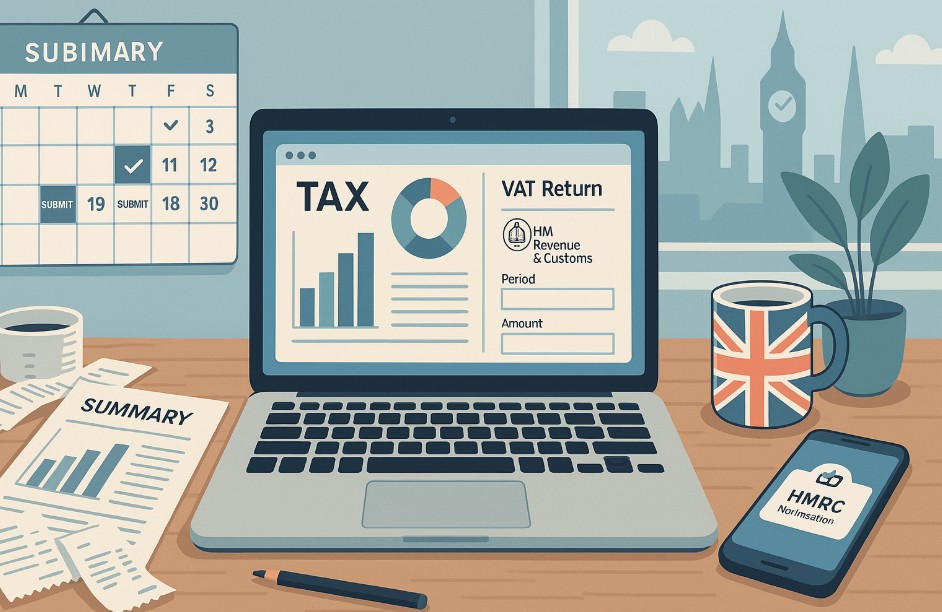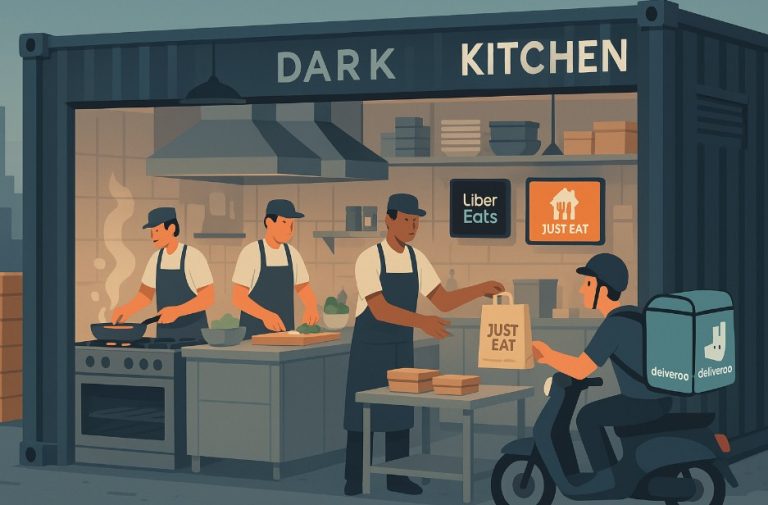What is Making Tax Digital? A Complete Guide for UK Businesses
What is Making Tax Digital exactly, and why is it transforming the way UK businesses handle their tax obligations?
Introduced by HM Revenue & Customs (HMRC), Making Tax Digital (MTD) is a major government initiative aimed at modernising the UK tax system through the use of digital technology.
As traditional, paper-based processes become increasingly outdated and prone to errors, MTD is designed to improve accuracy, reduce the tax gap, and streamline the way businesses and individuals report their taxes.
The transition to digital record keeping and submission isn’t just about compliance it represents a shift towards a more efficient, transparent, and real-time approach to tax administration.
Whether a business is large or small, incorporated or sole-traded, the move to digital will have a direct impact on how financial information is managed and communicated with HMRC.
This comprehensive guide explores how Making Tax Digital works, who it applies to, the benefits and challenges involved, and how businesses across the UK can prepare to meet their legal obligations under this evolving framework.
What is HMRC’s Making Tax Digital Initiative?
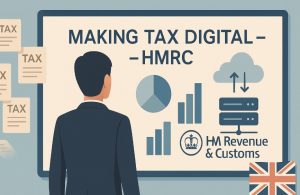
Making Tax Digital (MTD) is one of the most significant changes to the UK’s tax administration in recent years.
Introduced by HM Revenue and Customs (HMRC), this programme is designed to modernise the way businesses and individuals manage and submit their taxes.
The core objective of MTD is to reduce the tax gap the estimated difference between the amount of tax that should be collected and what is actually collected by making tax administration more effective, efficient, and easier for taxpayers to get right.
Instead of using paper-based methods or manually entering data into HMRC’s website, businesses are now required to maintain digital tax records and use software that connects directly to HMRC’s systems.
The vision is for a fully digital tax system where all relevant data is submitted electronically in near real-time, with less room for human error.
MTD is being implemented in phases, starting with VAT and later expanding to Income Tax and Corporation Tax.
This blog will explore who MTD applies to, how it works, how to comply, and what it means for UK businesses today and in the future.
Who Must Follow Making Tax Digital Rules?
MTD compliance currently depends on the type of tax and the size or income of the business. All VAT-registered businesses, regardless of turnover, must now comply with MTD for VAT.
This means they must use compatible software to keep records and submit VAT returns digitally to HMRC.
MTD for Income Tax, also known as MTD for Income Tax Self Assessment (ITSA), will apply from 6 April 2026 to self-employed individuals and landlords with gross business or property income over £50,000. From April 2027, this threshold will lower to £30,000.
Eventually, HMRC plans to bring in individuals earning more than £20,000, although no specific date has been confirmed. Partnerships are not currently mandated to comply but are expected to come into scope in the future.
HMRC is taking a phased approach to avoid overwhelming taxpayers and to allow sufficient time for software development and user testing.
HMRC also acknowledges that some individuals may not be able to comply due to age, disability, location, or religious beliefs. In these cases, an exemption may be granted.
Exemptions also apply to those in insolvency proceedings and individuals without a National Insurance number on the 31 January prior to the tax year start date.
What Are the Key Features of the UK’s Digital Tax System?
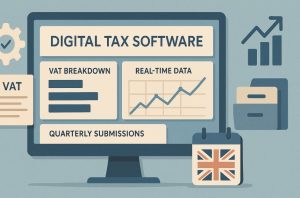
The central feature of MTD is the requirement for businesses and individuals to maintain and submit their tax records digitally using compatible software.
Digital record keeping allows for a clearer audit trail and minimises transcription errors that often arise in manual systems.
Data such as sales, purchases, income, and expenses must be recorded electronically and then submitted via secure API connections to HMRC.
Instead of submitting a single tax return once a year, taxpayers under MTD must provide HMRC with quarterly updates of their financial activity.
These updates offer a snapshot of income and expenses and move the tax system closer to real-time reporting. At the end of the tax year, a final declaration will confirm total income and any adjustments.
This system is designed not just to simplify the tax process but also to provide businesses with a better understanding of their financial position throughout the year.
The consistent cycle of updates helps prevent surprises when it comes to tax liabilities and encourages more effective financial planning.
How Does Making Tax Digital Apply to VAT?
MTD first applied to VAT from April 2019, when it became mandatory for businesses with taxable turnover above the VAT threshold. Since April 2022, this has been extended to all VAT-registered businesses, regardless of turnover.
HMRC now automatically signs up new VAT-registered businesses to MTD, so long as they are not exempt.
Under MTD for VAT, businesses must use MTD-compatible software to record their VAT transactions and submit VAT returns directly to HMRC.
These digital records must include the business name, VAT registration number, details of sales and purchases, VAT rates, and adjustments.
If a business currently uses spreadsheets to manage VAT records, they must also use bridging software to submit the data in a compliant format. Bridging software connects spreadsheets to HMRC’s systems, ensuring the data can be sent electronically.
What Is Making Tax Digital for Income Tax?
MTD for Income Tax is the second major phase of HMRC’s digital transformation strategy. This applies to self-employed individuals and landlords with annual gross income exceeding the set thresholds.
From 6 April 2026, those earning over £50,000 from self-employment or property rental will be required to comply. From April 2027, the same will apply to those earning over £30,000.
Unlike the traditional Self Assessment process, MTD for Income Tax requires individuals to submit quarterly updates for each source of income. This includes all income from business or property and any adjustments.
A final declaration will then be submitted annually to confirm the individual’s tax position.
Digital records must be kept for each income source. This means someone who is both self-employed and a landlord must maintain separate digital records for each and submit separate quarterly updates.
The aim is to provide a more accurate and timely picture of a taxpayer’s income and expenses throughout the year.
Individuals with income under £30,000 are not currently required to comply, though this is expected to change in future years. Those whose income is below £20,000 will likely not be required to comply, but can choose to do so voluntarily.
What Are Digital Records and What Needs to Be Stored?
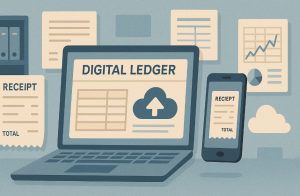
Under MTD, the way you record financial data matters. All relevant records must be kept digitally using either accounting software or spreadsheets with bridging tools. The data must be structured and accessible for digital submission to HMRC.
For VAT, digital records must include:
- The name and contact information of the business
- VAT registration number
- Details of VAT accounting schemes used
- VAT amounts charged and received
- Adjustments made to VAT returns
- Time and value of each supply
For income tax, digital records must reflect income and expenses related to each business or rental property. This includes invoices, receipts, rent payments, and other relevant financial documents.
The software used must be capable of compiling quarterly updates and submitting them directly to HMRC.
Digital records can also include digital photographs of paper receipts, provided the data is legible and complete. The aim is to eliminate paper-based records and ensure all financial data is traceable and accessible.
What Accounting Software Should Be Used?
HMRC does not supply its own software for MTD. Instead, taxpayers must choose from a list of MTD-compatible software providers.
This includes popular platforms such as Xero, QuickBooks, Sage, and FreeAgent, among others. The software must be able to maintain digital records, connect with HMRC, and submit updates through APIs.
Choosing the right software depends on several factors, including the size of the business, the complexity of income streams, and the budget.
Many providers offer different tiers of functionality. Free options may exist but could be limited in scope or offered for a limited time.
It’s also essential to consider factors like customer support, accessibility, data backup, and the ability to handle multiple income streams.
If you already use MTD-compliant software for VAT, you may wish to check whether it will also support MTD for Income Tax.
Bridging software is available for those who prefer to use spreadsheets. These tools act as a bridge between non-compliant tools and HMRC’s systems, but care must be taken to ensure the digital link is preserved throughout the reporting process.
How Do You Register for Making Tax Digital?
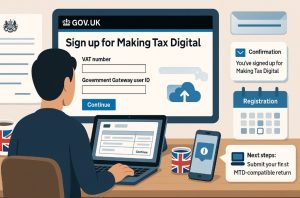
For VAT, most businesses are now automatically enrolled by HMRC. However, if you are a new VAT registrant or switching software, you may need to sign up via the Government Gateway.
For MTD for Income Tax, voluntary registration is currently available and encouraged for those who want to test the system before it becomes mandatory.
Registration requires a Government Gateway account, business or personal details, and compatible software. After registration, confirmation is usually sent via email.
Individuals must be mindful of their income levels and start preparing early if they expect to cross the compliance threshold. Once MTD becomes mandatory for them, they will need to be fully set up and able to meet the quarterly reporting requirements.
What Are the Reporting and Submission Requirements?
Quarterly updates are a fundamental part of MTD. These must be submitted throughout the tax year and reflect the financial position of the business or rental activity. The updates cover specific periods and must be submitted by set deadlines.
The standard reporting periods and deadlines are:
- 6 April to 5 July – due by 7 August
- 6 April to 5 October – due by 7 November
- 6 April to 5 January – due by 7 February
- 6 April to 5 April – due by 7 May
There is an option to elect for calendar quarters, which may be more convenient for businesses that already operate on a calendar-year basis. The deadlines remain the same, but reporting dates shift accordingly.
In addition to the updates, a final declaration is required after the tax year ends. This declaration confirms the taxpayer’s overall income and expenses and includes any additional income not already reported.
It effectively replaces the Self Assessment tax return under the traditional system.
What Are the Penalties for Non-Compliance?
HMRC enforces MTD rules through a points-based penalty system. Each time a taxpayer misses a submission deadline, they receive a penalty point.
Once a certain threshold is reached, a fixed penalty of £200 is applied. Continued late submissions attract further penalties.
This system is designed to be fair but firm. Occasional slip-ups won’t immediately result in a fine, but persistent lateness will.
Businesses must therefore stay on top of their quarterly deadlines and ensure they are using software that not only submits on time but also generates accurate updates.
Conclusion
Making Tax Digital is not simply a compliance exercise it represents a fundamental shift in how businesses and individuals interact with the UK tax system.
By adopting digital record keeping and quarterly updates, MTD aims to improve accuracy, reduce errors, and help businesses gain a better understanding of their financial health throughout the year.
With VAT already covered and Income Tax soon to follow, it’s essential that businesses start preparing now.
Selecting the right software, understanding your responsibilities, and getting used to the new processes early will make the transition much smoother when the rules become mandatory.
Whether you’re a sole trader, landlord, or small business owner, Making Tax Digital is a change you’ll need to embrace. And the sooner you do, the more benefits you can begin to unlock.
FAQs
What if I already use software for accounting?
You should check whether your current software is compatible with MTD. Most mainstream providers are, but you may need to upgrade or configure your existing system.
Do I need to keep different records for each business I run?
Yes. If you operate multiple businesses or income sources (such as self-employment and property income), you must keep separate digital records and submit separate updates for each.
Can I still use spreadsheets?
Yes, but you’ll need bridging software to ensure that the spreadsheet data can be submitted digitally to HMRC in the correct format.
Will there be free software available?
Some software providers may offer free versions with limited features. However, many full-service MTD solutions come with monthly fees.
Can I submit quarterly updates early?
Yes, as long as they reflect accurate data for the reporting period in question.
What happens if I receive a letter from HMRC about MTD?
It means HMRC has identified you as in-scope for the next phase of MTD and you’ll need to get prepared by the date specified.
Will HMRC phase out the old Self Assessment system?
Yes. For those in scope of MTD, the traditional Self Assessment return will eventually be replaced by the final declaration process.

